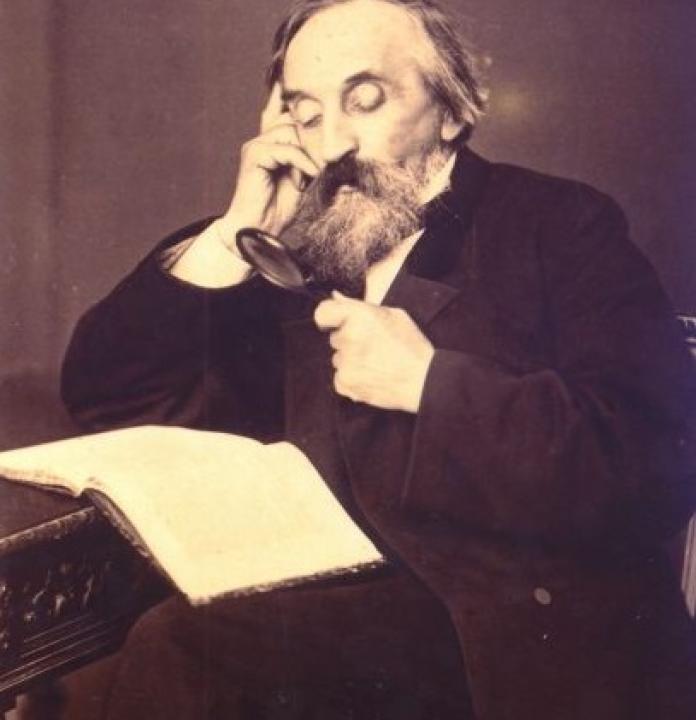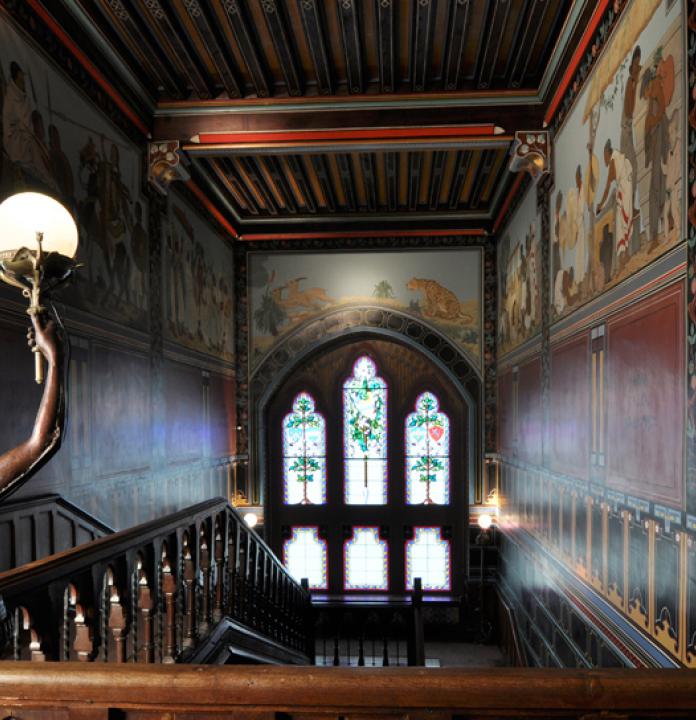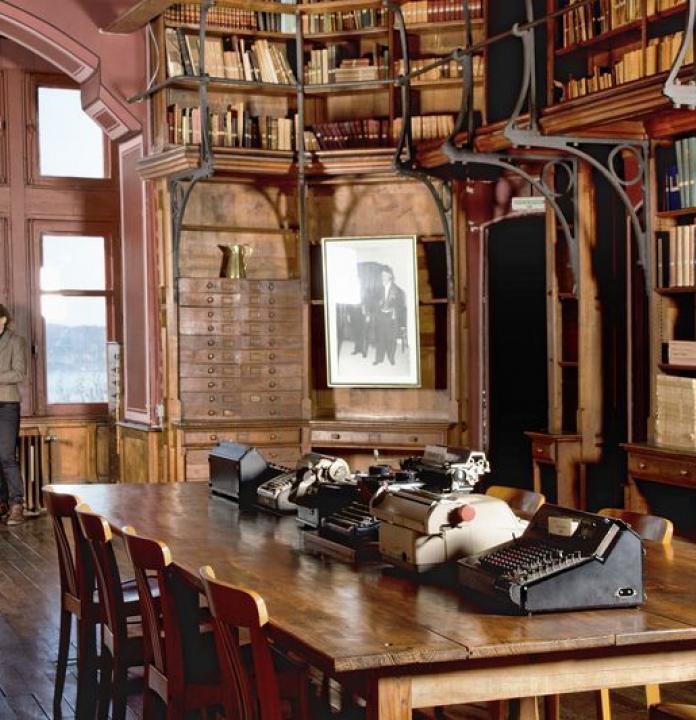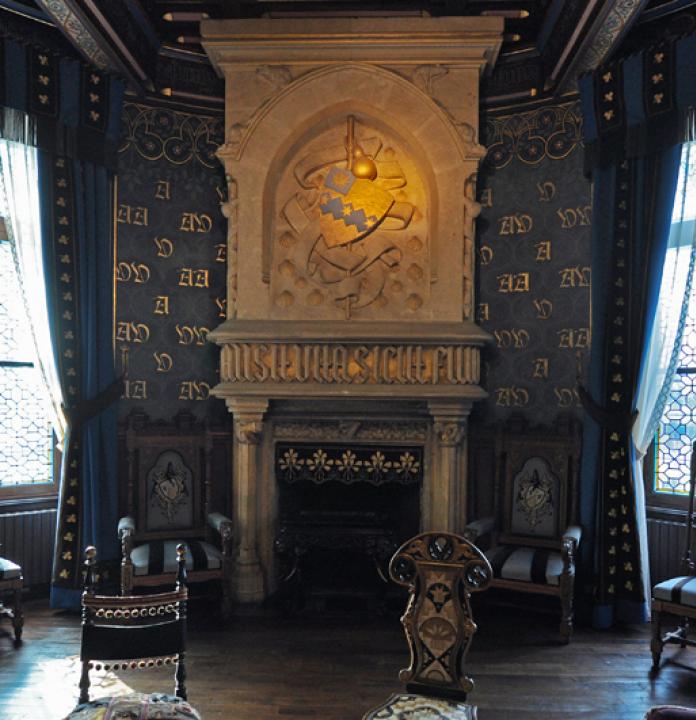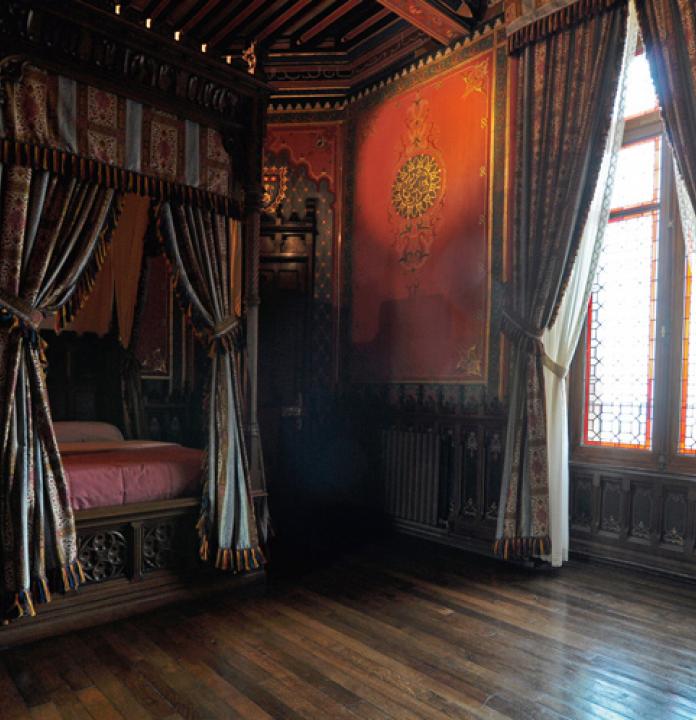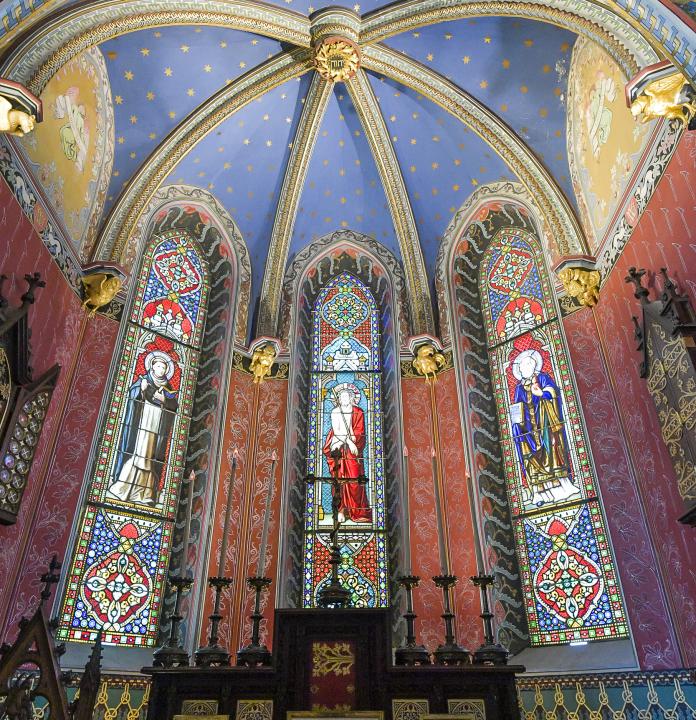D
Born in 1810 in Dublin to an Irish mother and a Basque father (or more precisely a Souletin), Antoine d'Abbadie asserts himself as an ardent defender of the Basque language and culture.
In 1836, together with Augustin Xaho, he published Grammar Studies on the Basque Language, before creating, a few years later, in Urrugne, the Basque festivals. His investment in the Basque people culture is such that, at the end of his life, he was given the name "Euskaldunen Aïta" (Father of the Basque people).
Scientist with a passion for travel
Although a fervent Christian, Antoine d'Abbadie stands out as an extraordinary scholarscientist, passionate about geography, astronomy and foreign cultures.
A great traveller, he drew the first cartography of Ethiopia after an eleven-year stay in the country. A geodesist and astronomer, he took interest, in such things as the matters of vertical variations, micro-seismicity, the sources of the Nile and celestial mapping.
Elected member of the Academy of Sciences in 1867, he became its president in 1892.
The castle houses an astronomical observatory, which operated until 1975. Before his death in 1897, Antoine d'Abbadie bequeathed his castle to the Academy of sciences.
Webcam
Visit
The Entrace hall
The main stairway is adorned with a highly coloured stain-glassed window, displaying the family coats of arms and the mottoes in the phylacteries: “To be rather than to pretend to be” and “My faith, my rights”.
A surreal world of chimeric animals supports the main stairway and matches admirably with the exotic decor of Ethiopian shields and animal horns.
The Library
Located at the heart of the château, the library is a place for work and reflection. As a symbol of Antoine d'Abbadie's eclectic spirit, it contains both scientific and literary works. A chestnut tree gallery runs along the shelves, while iron brackets with large bolts support it in a décor that prefigures Art Nouveau.
When Antoine d'Abbadie bequeathed his château to the Académie des Sciences in 1896, the library contained over 10,000 volumes, including more than 960 Basque works and 234 superb manuscripts written in Ghez, the Ethiopian liturgical language.
The lower section holds astronomical publications which, along with the calculating machines on the table, bear witness to the activity of the old observatory.
The Main Loundge
This large circular room is situated in the South keep. Panelled halfway up, the walls are painted blue and studded with the gilded monograms A and V in Gothic script.
The fireplace is the main feature of this room. In the centre of the hood is the coat of arms of Antoine d'Abbadie with his motto “Plus estre que paraistre” (“More being than appearing”) in phylactery, as well as a decoration based on the theme of the pilgrimage to Santiago de Compostela.
The Guest of Honour's Bedroom
This room was reserved for the couple’s most intimate guests.
The walls are covered with large panels of stretched painted canvas, decorated with rosettes and Arabic calligraphy.
The four-poster bed bears an inscription in Old French that reads "Doux sommeil, songes dorés, à qui repose céans, joyeux réveil, matinée propice" ("Sweet sleep, golden dreams, who rests here, happy awakening, auspicious morning").
The fireplace is adorned with yellow and turquoise majolica tiles. On the background of these tiles, one may read the Arabic proverb "Do not throw stones into the well from which you drink the water".
The Chapel
The decor bears the stamp of Duthoit and his strong liking for Sicilian and Oriental art. Roofed by a magnificent painted wooden ceiling above carpentry arches, the rectangular nave of the chapel is of a size designed to accommodate all the local farmers of the surrounding estate. The walls of the nave are hung with red trompe l'oeil tapestries on which you can see the monogrammed S and A for Saint Anthony.
The choir, oriented to the East, bathes in a soft glowing light that filters through the three stained-glass windows: in the centre, "the Suffering Christ", on the left the Holy Fathers, Saint Thomas Aquinas and on the right, Saint Augustine. Antoine d'Abbadie and his wife rest in peace in a crypt lodged below the altar.
Outdoor tour
The outside walls of the castle are particularly decorated. There are many stone sculptures such as cats playing with mice, elephants, monkeys or snakes. Crenelation, towers and keep make the building look like a medieval castle. The park is adorned with palm trees and the landscape enjoys views on the ocean and on the mountains.
Abbadia will be revealed to you from the beginning to nowadays thanks to the outside scenography. Immerse yourself in the history of this multifaceted place: landscape garden, farming, science laboratory, golf course, even campsite. Elements of interpretation, archival photos and maps, time travel guaranteed!
